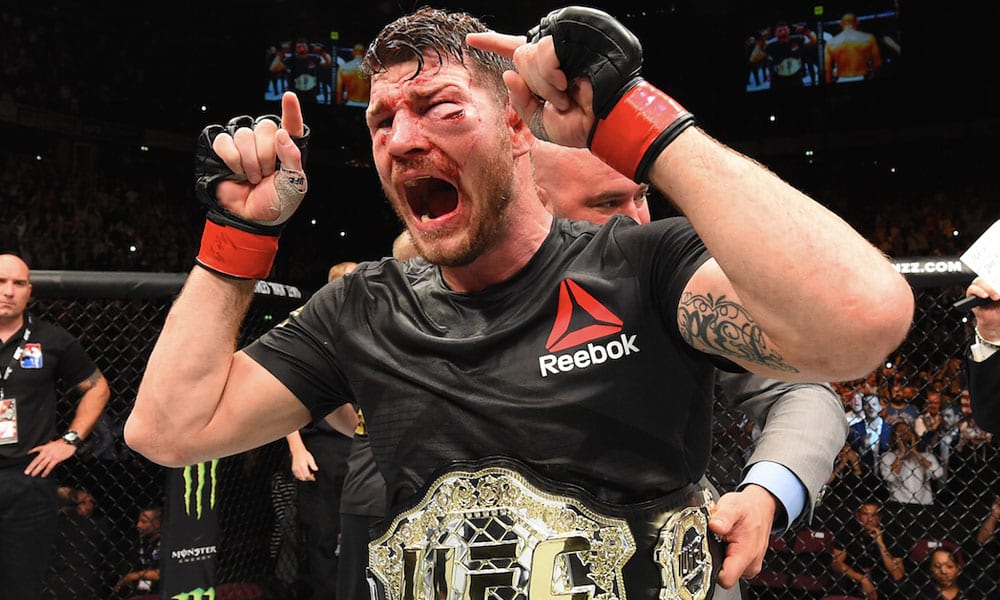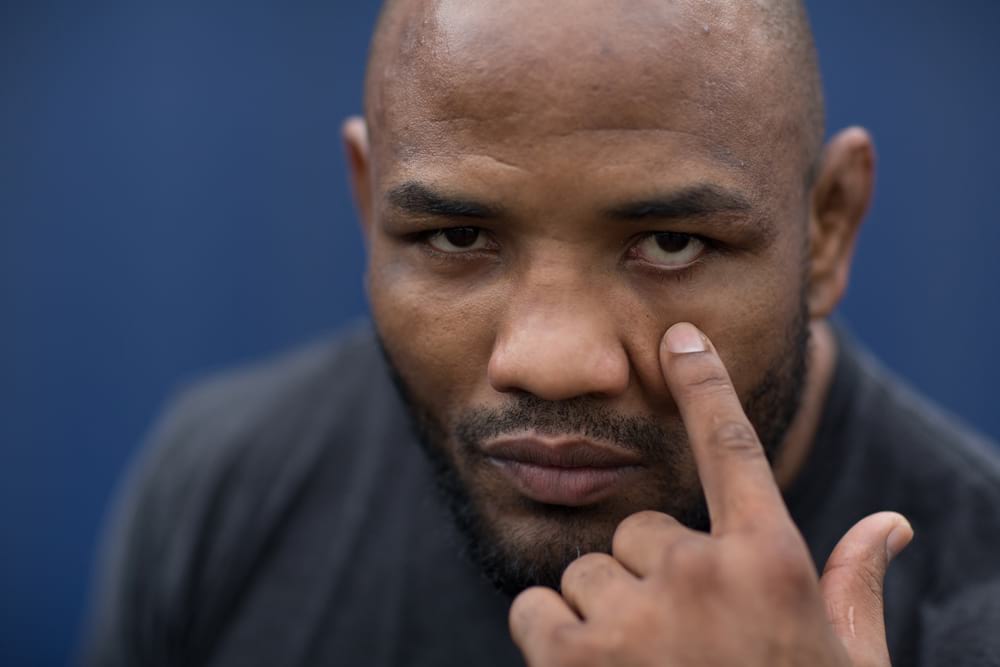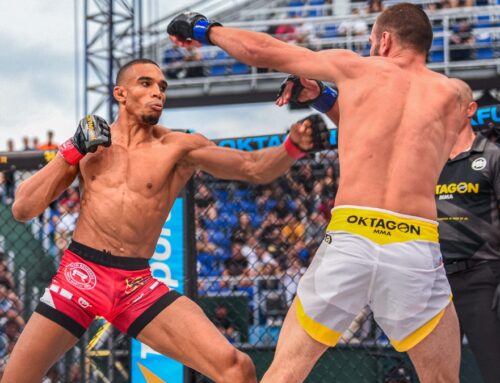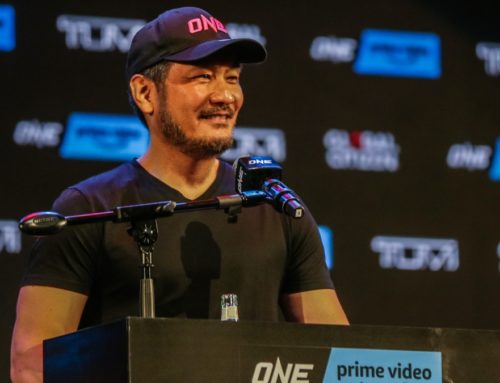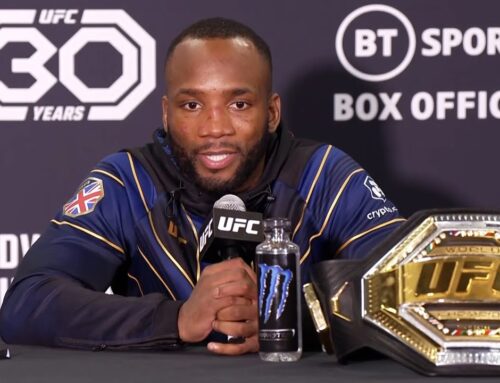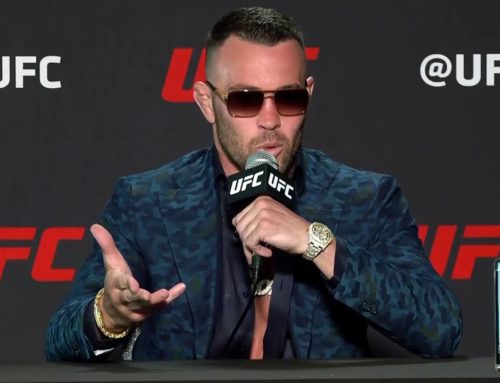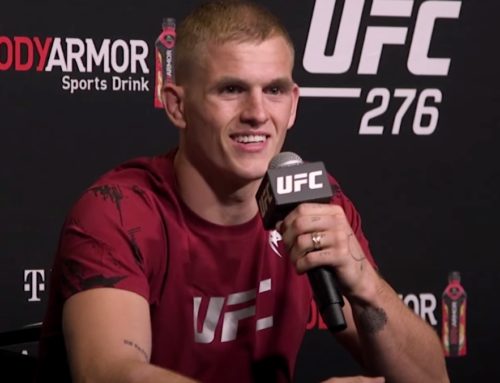Few fighters split opinion quite like Cuban middleweight Yoel Romero. A hero to some, a cheat to others, a beast to all, Romero, self-proclaimed ‘Soldier of God’, has carried numerous labels throughout the course of his seven-year professional MMA career, often juggling two or three at the same time, and even now, when on the cusp of becoming UFC interim middleweight champion, there remains a degree of mystique that makes his character hard to place. Is he good? Is he bad? Is he both good and bad?
At this point, it’s hard to say.
Chances are, Yoel Romero doesn’t care what you think, nor whether you like him or not. The only title of any relevance to him right now is UFC middleweight champion. That’s a title he has been chasing ever since he emerged as a top contender at 185-pounds and began haranguing current champion Michael Bisping, one of his chief detractors. It’s also a title many have tipped to him to wear at some point either this year or next.
First, though, Romero, 13-1, settles for a UFC interim middleweight title scrap with Australia’s Robert Whittaker on Saturday (July 8) at UFC 213. Win that, you feel, and there’s no longer any denying or avoiding the 40-year-old with biceps like bowling balls, regardless of whether you think he’s a good, honest bloke or not.
The Good
Always begin on a positive. With Yoel Romero, there’s plenty of that – plenty of positivity, upside, good stuff. He is, for starters, arguably one of the best pure wrestlers to ever grace the sport of mixed martial arts, a fact highlighted by the way he takes opponents down and keeps them there for pretty much as long as he feels is necessary. A silver medallist in freestyle wrestling at the 2000 Olympic games, Romero isn’t just all brute force and truck-like impact. There’s a technique and strategy to his work, too. His skill is learned, one he has honed over a number of years, and it’s this seasoning that gives him an edge over men with comparable physical strength – not that there are many of those around.
As for Romero’s form, he made a competitive fight, on paper, with Chris Weidman seem quite the opposite following a knee to the face that rendered the former UFC champion horizontal and unsure of his whereabouts. Before that, he had done similar to another former champion, Lyoto Machida, as well as fellow contender Derek Brunson, both of whom were halted in dramatic fashion.
Romero, you see, is that rare thing: a wrestler who can whack. What’s more, he shows no aversion to standing and banging with his fists, knees and feet, despite a natural urge to smother and suffocate men on the ground, a result of his wrestling background. So powerful and explosive is Romero, in fact, he seems capable of producing something spectacular at any point in a fight, whether on his feet or off them. Hardly smooth or technically correct, his striking nonetheless carries a surprise element, on account of his athleticism, that ensures he’s a danger to anyone within or out of range. It also makes him damn fun to watch for all those spared the terrifying prospect of catching one of his punches, knees or kicks.
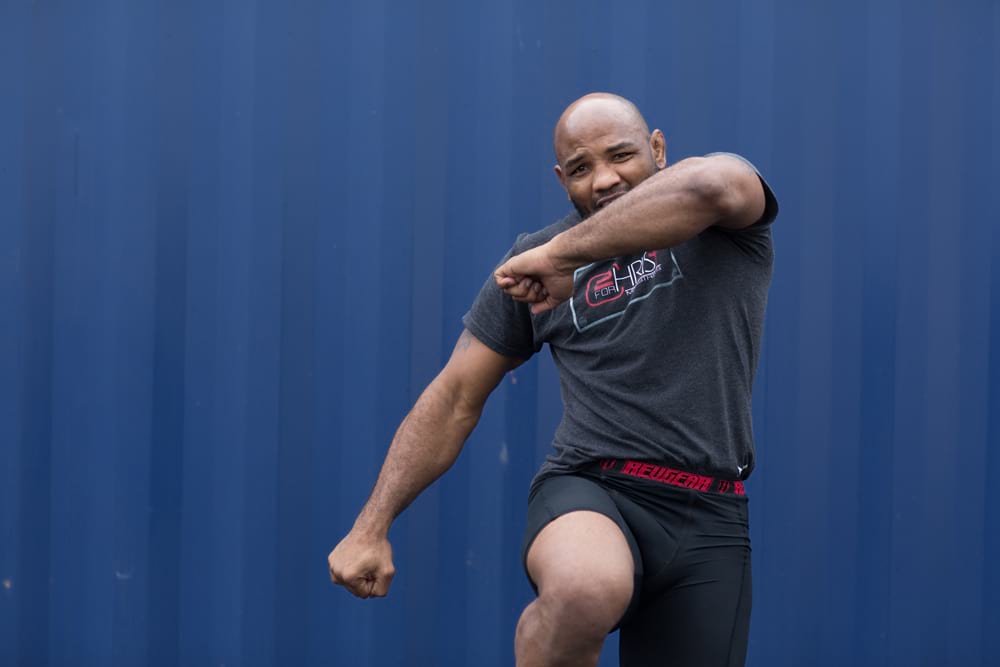
The Bad
The knock on Yoel Romero has always been that he’s too big and too muscular and that this image we assume represents strength and power and guaranteed victory is, in actual fact, going to be detrimental to his long-term prospects in a fight. Those lovely muscles, they say, will require more oxygen than their smaller counterparts and will, in time, accumulate so much lactic acid that Romero will invariably slow down, his attacks will stutter and then malfunction, and he’ll become a stationary target for anyone fortunate enough to get past the first and second rounds and drag him into deep waters. Do that, they say, and you stand a chance of beating him. Make him work; make him breathe hard; make him collapse.
Yet, interestingly, despite this viewpoint, Romero has seen the third and final round in each of his last seven fights, eventually winning five of them via stoppage. That’s hardly the form of someone who struggles in a long fight, nor a sign his powers wane the later a fight goes. Instead, it suggests Romero is just as dangerous, if not more so, when a fight enters the final round as he is when it begins. It is then, in the last round, that he uses his unpredictability and experience – as a world-class wrestler – to outlast his opponent and surprise them with something hurtful when it is they who start to tire down the stretch.
But not so fast, I hear you say. What about Tim Kennedy? He was someone Romero stopped in the third round of an action-packed fight in 2014. He was also someone many believe was robbed of victory having badly hurt Romero at the end of the second round only to fall victim to what’s known as a spot of gamesmanship. Well, some call it gamesmanship; others, call them old-fashioned, stick with cheating.
As if you needed reminding, Romero, his senses scrambled, his corner in disarray, ate up valuable seconds between rounds when too much Vaseline was applied to one of his cuts, which delayed the start of round three, and he was advised and elected to stay sat while the issue was fixed. Far from an oops-sorry moment, Romero and his corner, in the heat of battle, knew exactly what they were doing and the crowd, realising this, were incensed, as was Kennedy, the fighter once in the ascendency but now as perplexed as everyone else.
It wasn’t just a delay, it was a reprieve. Romero was putting off the inevitable – his demise – and robbing Kennedy of a likely victory. Ten gold stars for invention and craft, maybe, it was nevertheless a moment that enraged purists, especially when witnessing Romero, sufficiently recovered, storm out for round three and, within 58 seconds, turn the tables and stop Kennedy in one of the most controversial finishes in UFC history. Now you were in rush-him-out-the-back territory, so vociferous and hateful was the response.
Romero, however, simply shrugged. He brushed it off. He thanked God.
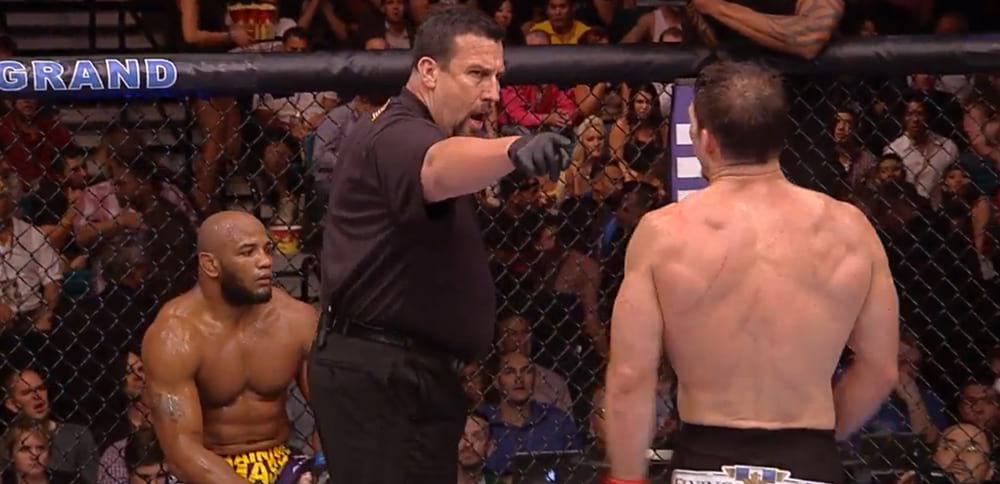
The Ugly
No physique in MMA attracts as many admiring glances or suspicious frowns as that of Yoel Romero. The envy of many, it is also a collection of sharp edges and swollen muscle that many feel is unobtainable without some sort of illegal aid. You hear it all the time: Yoel Romero is 40 years of age now, yet still looks like a man half his age. How can that be?
Innocent until proven guilty and all that, Romero was doing so well until January 2016. That was the month he was informed of a potential doping violation stemming from an out of competition test conducted by USADA. Later, Romero and his team put the dirty test down to a supplement he’d taken after a fight with Ronaldo ‘Jacare’ Souza in December, a supplement that was sent out for testing, both by his team and USADA, and did indeed contain a banned substance (ibutamoren, a growth hormone release stimulator) not listed on its label. After that, Romero’s team and USADA discussed a deal for a nine-month suspension, but Romero preferred to go to arbitration. Then, in April, it was agreed he would serve a six-month ban.
The result of the Souza fight stuck. It wasn’t overturned. Romero passed both his pre and post-fight tests and that was good enough for those in charge. What, however, also stuck was the mud that invariably attaches itself to all who fail a drug test at some point in their athletic career. Point seemingly proven, it was viewed as validation in the eyes of those who had ever doubted the authenticity of Romero’s comic book superhero physique and would also, in time, be something used against him when the time came to book fights. Why fight Romero, prospective opponents would say, when he’s been popped for an illegal substance? Why fight that monster if the playing field isn’t even?
Accusations such as these have long been levelled at Romero, mostly notably from Michael Bisping, the current UFC middleweight champion, who has only ever begrudgingly entertained the idea of facing him in an Octagon. “If Yoel beats Chris (Weidman), I honestly don’t think I’ll fight Yoel, because he tested positive for steroids,” Bisping told SiriusXM Rush before Romero’s latest win. He then expanded on this in 2017, telling The Independent: “From what I’m led to believe, the advantage of steroids is that they stay in your system for a long, long time. But he (Romero) only got a six-month ban. That’s my issue with it. I think he should have to wait a lot longer. You can’t test positive for steroids and be back fighting in six months.”
Therein lies the problem. Mud sticks; like Yoel Romero’s top control, you might say. It sticks and it’s hard to wash off, no matter how spectacular a knockout victory might be or how shiny the gold belt around your waist happens to be.
Rest assured, Yoel Romero’s trying, though. He’s actively trying to fight the best middleweights in the world – a process that continues Saturday (July 8) with Robert Whittaker – and then seeking to put them to the sword in a manner that has his followers once again believing in superheroes.
